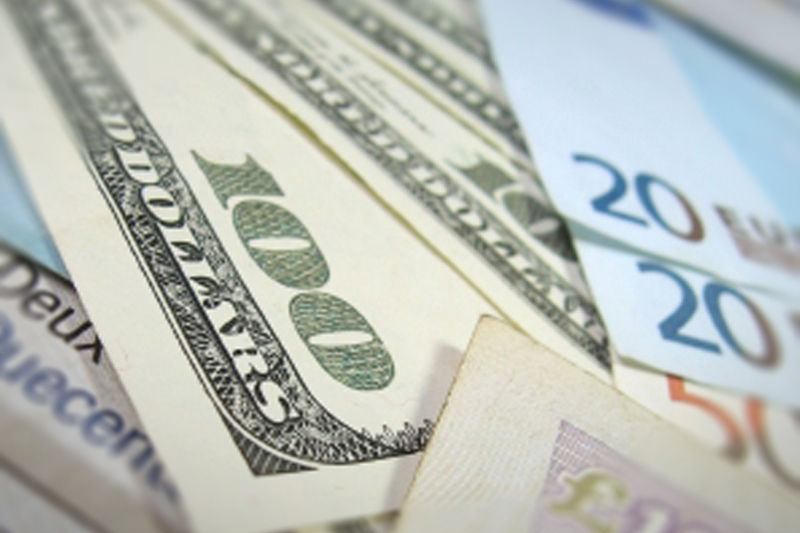Investing.com -- EUR/USD posted moderate gains to end the month on a high note, as currency traders digested hawkish comments from Federal Reserve vice chair Stanley Fischer on Saturday on an increased possibility for a September interest rate hike.
The currency pair traded in a tight range between 1.1172 and 1.1262 before settling at 1.1215, up 0.0028 or 0.25% on the session. For the month of August, EUR/USD gained more than 2.5% in spite of a four-day losing streak last week when it fell below 1.12. The euro still remains down by more than 7% against the dollar on the calendar year.
EUR/USD likely gained support at 1.0847, the low from Aug. 5 and was met with resistance at 1.1616, the high from Aug. 25.
On Monday, investors reacted to market-moving comments from European Central Bank Vice President Vitor Constancio, Bank of England Governor Mark Carney and Fischer regarding global developments in inflation over the weekend. Appearing at the Federal Reserve Bank of Kansas City's three-day Economic Symposium in Jackson Hole, Wyoming , Fischer indicated that there is good reason to believe that inflation will move higher as the temporary forces restraining it continue to "dissipate further." Core PCE inflation, the Fed's preferred gauge of price increases, has remained under its long-term targeted goal of 2% for every month over the last three years. The core reading of inflation strips out the heavy impact of food and energy prices.
During Fischer's address on U.S. Inflation Developments, the Fed vice chair blamed plunging energy prices, a stronger dollar and a soft commodities market for creating downward pressure on inflation. Fischer noted that a rise in the dollar by "17% in nominal terms," over the last year could restrain U.S. GDP growth through next year and possibly into 2017. Fischer also described the crash in energy prices as a "one-off" event, even as U.S. crude futures hover near six and a half year lows. Fischer, however, added that energy markets do not expect crude prices to fall sharply in the near future and their influence holding down inflation should be viewed as transitory.
The Fed is also keeping a close eye on slack in the economy and labor market as it decides whether to raise short-term interest rates for the first time in nearly a decade. A gradual reduction of slack is typically associated with less downward pressure on inflation. Labor market slack is defined as the quantity of unemployed resources such as labor and capital that can be implemented differently, but is not being utilized effectively. In June, the Fed's Survey of Economic Projections forecasted that Core PCE inflation will rise to a level between 1.6 and 1.9% in 2016 from its current level of 1.2%. By the end of 2017, analysts expect core inflation to reach between 1.9 and 2.0%, according to the survey.
In Wyoming, Fischer emphasized that the Fed should not wait until inflation moves back up to 2% to begin raising short-term rates. On Friday, Fischer indicated in an exclusive interview with CNBC that recent U.S. economic data had been impressive, providing a compelling argument for short-term rates to head in a higher direction.
The Bank of England is also mulling policy normalization in a move that is widely expected not to occur until at least 2016. In July, headline inflation in the euro zone increased moderately by 0.2%. The ECB Governing Council will meet next on Thursday.
“The prospect of sustained momentum (in the economy) will likely put the decision as to when to start the process of gradual monetary policy normalization into sharper relief around the turn of this year," Carney said.
The U.S. Dollar Index, which measures the strength of the greenback versus a basket of six other major currencies, gained 0.02% to close at 95.98. The index has closed higher on five of the last six sessions.
